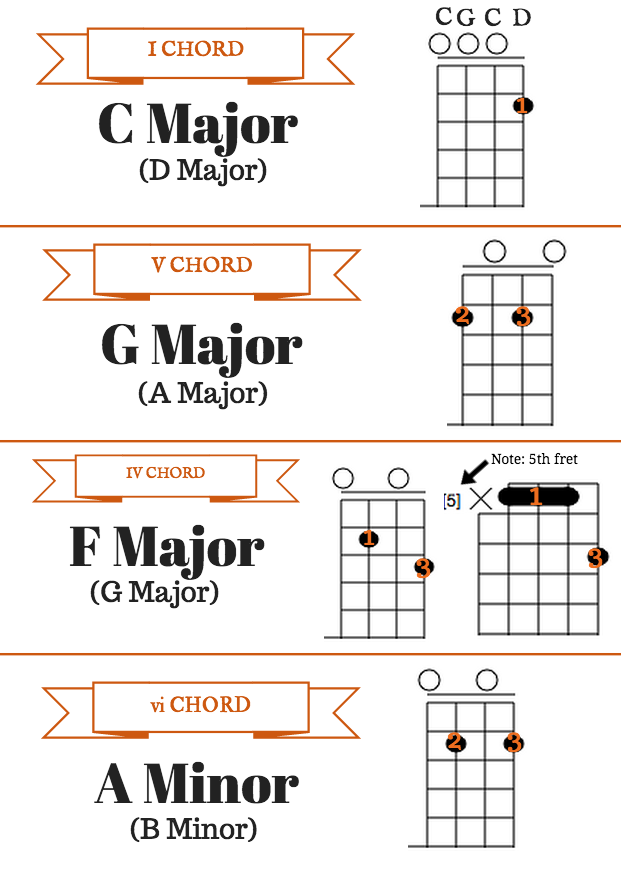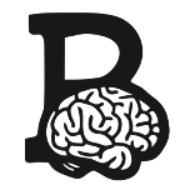To Chord or Not to Chord, Is That The Question?
You may have encountered some debate as to whether clawhammer banjo players should learn or use chords in their playing. If you come from a guitar playing background – or any other stringed instrument for that matter – you may find it a bit strange that this could be an issue.
So why the debate?
It stems from the belief (likely true) that the earliest clawhammer banjo players didn’t think about or use chords, and probably weren’t even familiar with the concept – at least in terms of the way we think of them today.
The popularization of the guitar in the early 20th century is often cited as the moment when chords entered the consciousness of folk musicians in America.
So some may say that to be true to the traditional music of clawhammer banjo, one should eschew chords. In some cases, chords – especially the ones “modern” musicians tend to favor – impose harmonies on the music that you wouldn’t have heard back in pre-chordal days. So, if you use them, then you’re not being historically accurate (a worthy consideration if historical preservation is your goal).
There are a few problems with this line of reasoning, in my view.
One is that not everyone who takes up clawhammer banjo is interested in replicating the music of the earliest clawhammer banjoists with perfect fidelity. In fact, I’d bet the vast majority have almost no interest in doing so.
Second, clawhammer banjo is just a technique – a technique that can be used to play any style of music you choose. And, for much of that music, chords are going to play a huge part.
Yes, the early clawhammer banjoists in the Appalachian south had a core body of tunes they played in this style. But every technique must develop within the context of some type of musical tradition. There’s no rule that states you can never extend that technique outside the confines of that tradition.
In fact, were such a rule to exist, then folks would’ve never started fiddling on their violins!
Third is that just because you’ve learned your chords doesn’t mean you have to use them. Ultimately, you can still choose when to use them and when not to. And for those tunes where historical accuracy is your goal, you can just leave them out. They’re just another tool in the toolbox.
But I think they’re an invaluable tool for the clawhammer banjoist. Here’s why:
7 REASONS CLAWHAMMER BANJOISTS SHOULD KNOW THEIR CHORDS
Reason #1: Better Background “Atmosphere”
The banjo is a highly resonant instrument, especially modern ones with metal tone rings and steel strings. This means that when the banjo is being played, there are all sorts of things vibrating on the instrument other than the string that’s just been struck. Including the other strings!
So, if those other strings aren’t in harmony with the note you’ve just struck, then things won’t sound quite right. If you’re fingering the notes of the chord of the moment, however, then when those other strings ring out, they will sound, well….harmonious.
Reason #2: Your Mistakes Will Sound Better
If you’re fingering the notes of the chord of the moment and you happen to hit a note other than the one you intended, chances are it’ll sound just fine, since those other notes you’re fretting are, by definition, in harmony with the note you intended to hit. In some cases, you might even think it sounds better. A lot of great music has been the result of happy accidents such as this.
Reason #3: Makes Picking Out New Tunes By Ear Much Easier
The chord progression for any piece of music provides a roadmap for where to find the melody for the tune you’re learning. Instead of having all the notes on the fretboard as possible spots to find the notes of the melody, you now have constrained your choices to just a fraction of that number.
In most cases – and this seems to be true of most musicians – I typically start learning a tune by first finding its chord progression. These form the anchor points, and with them in place it will greatly shorten the amount of time it takes to work up a new tune, and make it much easier.
Reason #4: Makes Learning Tunes “On the Fly” Much Easier
If you’re encountering a tune you’ve never heard or learned before, and want to try picking it up “on the fly” (i.e. as the tune is being played), first finding the chord progression first can be a GREAT shortcut. In fact, once you know the chord progression, you could even just “bum ditty” your heart out and things will probably sound just fine (see Reason #2) above.
But, if you’ve spent some time learning new tunes by starting with the chord progression (see Reason #3), you’ll probably find that you’re able to pick out those melody notes (or at least most of them) pretty quickly.
Reason #5: You Can Play In Any Genre
As I said earlier, while the earliest old-time music wasn’t chord based, most of the music you hear these days is, and much of it sounds great played in clawhammer style. Knowing your chords allows you to play that music – alone or with other musicians.
If you’re anything like me, you like all KINDS of music, and you’d love to be able to play as much of that music as you can on your banjo. There’s no sense in limiting the world of musical possibility from the get-go.
Reason #6: You Can Play With Other Musicians In Any Musical Situation
Chances are, if you play an instrument for any length of time, you’ll find yourself in situations where you’re with other musicians who’d like to make some music with you. You may even be asked to be part of an impromptu band configuration (e.g. playing a couple songs for a church service, etc.). Sometimes these situations are unexpected.
And chances are, the music those folks will want to make will be chord based. You don’t want to be in the awkward position of saying “I’m sorry, but unless you know pre-20th Century southern mountain music in Myxolydian mode, I’m gonna have to sit this one out.”
That would be sad for everyone.
Reason #7: The Old-Timers Would’ve Surely Used Them
Why didn’t the earliest clawhammer banjoists learn or think in terms of chords? Probably because they didn’t know about them.
The truth is, chords are an extraordinarily useful concept, and if there’s one thing that’s common to many of the earliest banjoists, it was that they loved to find ways to simplify their playing. This is one reason that the early players searched for and used so many alternate tunings – to make playing the banjo easier and more efficient.
If someone had introduced them to concept of chords back in the day, I’m quite certain they’d have quickly recognized their value, and started using them in a heartbeat. So, if your view of authenticity includes honoring the spirit of the earliest clawhammerists, then availing yourself to any and all avenues for simplifying music making is part of that.
What Chords Should You Learn?
So, what does learning chords mean exactly? You’ve probably seen those soul crushing, encyclopedic chord diagrams listing out all the possible chords in every key and so forth. Is that what you have to learn?
And if you’re a banjo player using multiple tunings, do you have to learn them all in every possible tuning you use?!
Not at all.
You’ll get most of your mileage from just knowing the positions for a few chords. This is an example of the 80/20 principle at work, or perhaps in this case the 95/5 principle (even the Beatles, known for their penchant for unusual chords, still relied mainly on 3 or 4 chords in their music)
So what are those few chords you should learn? Well, for the clawhammer banjoists, it’s just a few basic ones for whatever key your banjo is tuned to (i.e. G for standard G, C for double C, etc.).
These are the I (or “tonic”) chord, which will be the most commonly used chord in any key, the V (or “dominant”) chord, which will be used second most commonly, the IV (or “subdominant”) chord, which will be used third most often, and then perhaps the vi chord, which is the most common minor chord employed in any given key.
If that sounds like gobbledygook, not to worry. In the key of G, that’ll be G major, D major, C major, and E minor. So these are the main ones to familiarize yourself with in standard G (gDGBD) tuning.
In the key of C, that’ll be C major, G major, F major, and A minor. So these are the main ones to familiarize yourself with in “double C” (gCGCG) tuning.
With just these chord positions in these two tunings and a capo, you’ll be able to play the most commonly used chords in just about every key (though most traditional banjo tunes are gonna be in the keys of G, A, C, and D). You may pick up a few more as needed on a tune by tune basis, but these first few will take you a long way.
(If you’re going to be playing in a lot of musical contexts where banjos aren’t commonly found, then you might also benefit from learning the chords in “drop C” tuning, which is gCGBD.)
Two tunings, four chords in each, and a whole world of possibility opens up. Well worth it, I’d say.
Here’s what those chords look like in standard G and double C tuning (click here to download a PDF of these)
Chords In Standard G (gDGBD) Tuning:
(chord in parentheses is if you’re in aEAC#E tuning)

Fingering notes: 1=index finger, 2=middle finger, 3=ring finger, 4=little finger
Chords In Double C (gCGCD) Tuning:
(chord in parentheses is if you’re in aDADE tuning)


